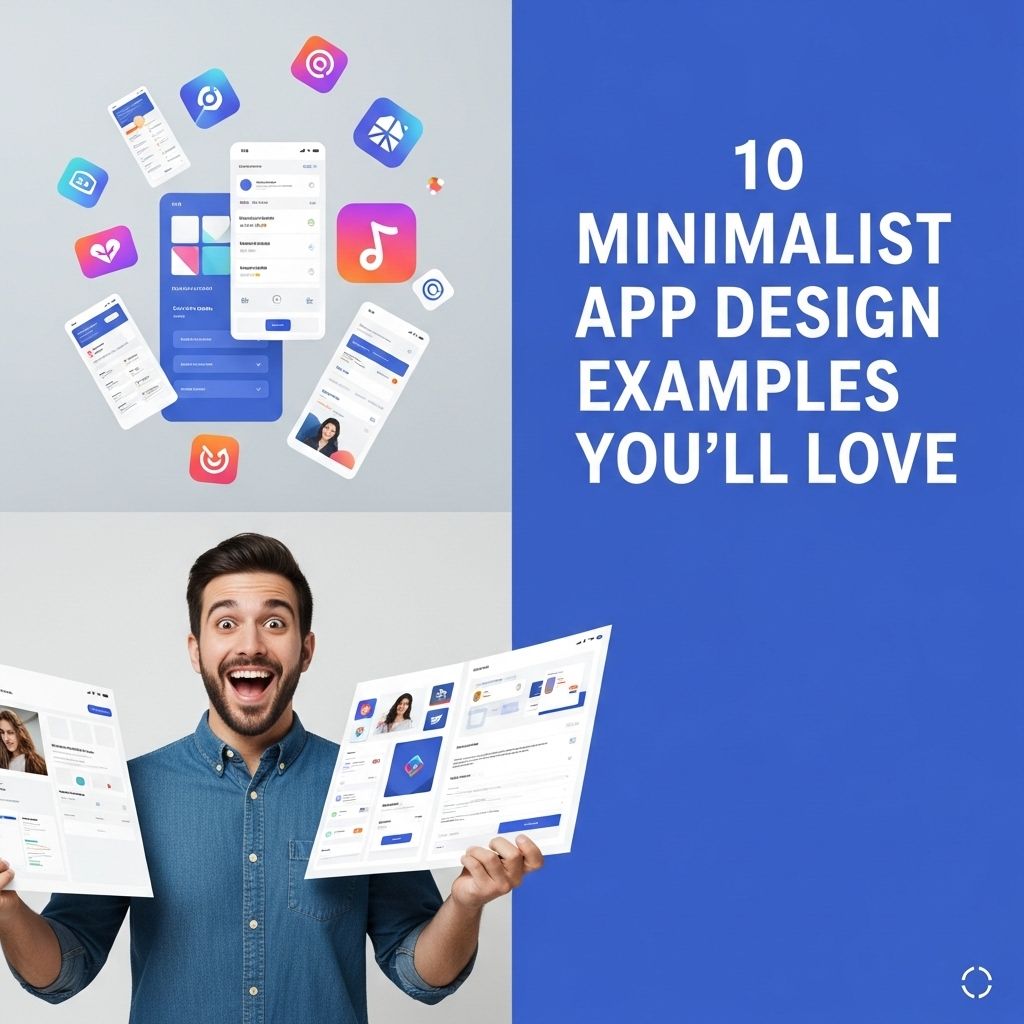In an age where digital clutter can easily overwhelm users, minimalist app design has emerged as a refreshing solution. Stripped of unnecessary elements, these designs not only enhance user experience but also focus on functionality. This article explores ten stunning examples of minimalist app designs that exemplify simplicity and elegance, each bringing its unique vision to life.
What is Minimalist Design?
Minimalist design is characterized by simplicity, utilizing only the essential elements to create a clean and effective interface. This approach removes distractions and prioritizes user interaction, making it easier to navigate and engage with the app. The primary goals include:
- Clarity
- Efficiency
- Focus on Content
- Enhanced Usability
Key Principles of Minimalist App Design
Understanding the core principles of minimalist design can help developers and designers create apps that resonate with users. Here are some of the key principles:
- Use of White Space: Adequate white space improves readability and gives the design room to breathe.
- Limited Color Palette: A restricted color scheme can evoke emotions and enhance visual storytelling without overwhelming the user.
- Focus on Typography: Clear and legible fonts support better communication and guide users through the content.
- Simplicity in Navigation: Easy-to-understand navigation helps users find what they need without frustration.
10 Minimalist App Design Examples
Here are ten remarkable minimalist app designs that showcase how simplicity can drive engagement and functionality:
1. Calm
Calm is a meditation app that embraces a serene minimalist design. Its soothing colors and simple interfaces encourage users to focus on relaxation. Features include:
- Clean layout
- Subtle animations
- Easy-to-navigate content
2. Evernote
Evernote’s design emphasizes organization and accessibility. Users can easily create notes and lists without distractions. Key design elements include:
- Simple note-taking interface
- Consistent iconography
- Efficient search functionality
3. Google Keep
Google Keep exemplifies minimalist design through its sticky note interface. Users can jot down quick thoughts or tasks seamlessly. Notable features are:
| Feature | Description |
|---|---|
| Color-Coded Notes | Helps users quickly identify different types of notes. |
| Checklists | Make task management straightforward. |
| Voice Memos | Users can record thoughts hands-free. |
4. Trello
Trello’s board-based layout allows users to manage projects effortlessly. Its clean interface focuses on functionality. Essential aspects include:
- Drag-and-drop feature
- Customizable boards
- Visual task management
5. Instagram
While Instagram is visually rich, its design remains minimalist by emphasizing content. The app’s layout is geared toward photography, featuring:
- Streamlined navigation: Easy access to feeds and profiles.
- Minimal text: Focus on images rather than lengthy descriptions.
6. Airbnb
Airbnb employs minimalist design to enhance the user experience in finding accommodations. Key design features include:
- Large, appealing images
- Simple search filters
- Easy booking process
7. Todoist
Todoist’s minimalist interface lets users manage tasks effortlessly. Features that stand out include:
- Intuitive task input
- Project organization
- Sleek design elements
8. Spotify
Spotify simplifies music streaming with its clean design. The app focuses on user experience by offering:
- Clear navigation between playlists
- Minimal onboarding process
- Focus on music recommendations
9. Focus@Will
This productivity app combines minimalist design with a focus on enhancing concentration. Key features include:
- Simple interface with few distractions
- High-quality audio tracks
- Customizable focus timers
10. Apple Wallet
Apple Wallet simplifies managing digital cards and passes. Its design stands out due to:
- Streamlined card organization
- Quick access features
- Elegant visual presentation
Benefits of Minimalist App Design
Adopting a minimalist approach can yield numerous advantages for both users and developers:
- Improved User Experience: Users can find what they need quickly, leading to increased satisfaction.
- Better Performance: Minimalist apps often run more efficiently due to reduced resource consumption.
- Higher Engagement: Clear designs can lead to higher retention rates.
Conclusion
The ten examples showcased illustrate the power of minimalist app design in creating intuitive and user-friendly experiences. By focusing on essential elements, these apps not only enhance usability but also foster a deeper connection with users. As technology continues to evolve, embracing simplicity can lead to innovative solutions that stand the test of time.
FAQ
What is minimalist app design?
Minimalist app design focuses on simplicity and functionality, using less visual clutter to enhance user experience.
Why is minimalist design popular in mobile apps?
Minimalist design is popular because it helps users focus on essential features, improves navigation, and enhances overall usability.
How can I achieve a minimalist design for my app?
To achieve a minimalist design, use ample white space, limit color palettes, simplify navigation, and prioritize essential content.
What are some benefits of minimalist app design?
Benefits include faster load times, easier navigation, improved user engagement, and a more aesthetically pleasing interface.
Can minimalist design work for all types of apps?
Yes, minimalist design can work for various app types, but it is especially effective for productivity, lifestyle, and wellness apps.
Are there any drawbacks to minimalist app design?
Potential drawbacks include oversimplification, which may lead to missing features or functionalities that users expect.




